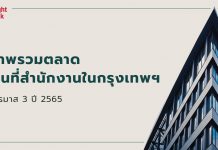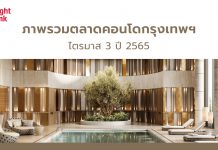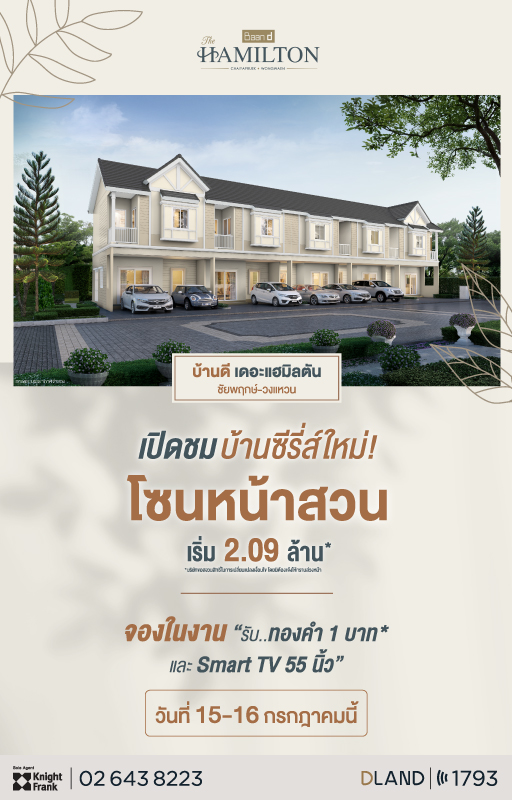Ms. Risinee Sarikaputra, Director, Head of Research and Consultancy, Knight Frank Chartered (Thailand) Co., Ltd. reveals that the Bangkok condominium market in the second quarter of 2015 continued to grow, despite concerns over the spillover effects from the Thai economic downturn and rising household debts. The supply from the peripheral Bangkok areas dominated the market with new launches constituting 73% of the total supply, as land scarcity and land cost are the main obstacles for developers. Demand from affluent buyers remained strong as high end condominiums with average selling prices of THB 150,000 baht per square meters from reputable developers in prime locations did not take long to sell out. The segment with the slowest growth is the mid-market condominiums located further away from public transport modes. Overall, prices were still on the rise, especially for properties in the super-prime market.
The Bangkok condominium supply at the end of Q2 2015 included 362,697 units, representing a 4.2% increase from the previous quarter and 23.9% increase from the same period last year. So far this year, 34,439 units from 71 condominium projects were added to the supply, of which 20,780 units from 37 condominium projects were launched in Q2 2015 alone.
The majority of new launches was still in the peripheral Bangkok area, representing 73% of the Q2 2015 new supply, followed by the city fringe area and the city area at 21% and 6% of the Q2 2015 launches respectively. Only around 1,242 units were launched in the city area due to the scarcity of land available for development and the cost of land acquisition, which is currently at its peak. Most newly launched projects in the city area were therefore Grade A projects and above in order to justify the prices, which had factored in the land cost.
Miss Risinee added that a similar trend could be observed in the city fringe area where new developments with convenient access to mass transit systems were starting to shift to the upper-end market to justify higher land costs. Out of the 7 projects launched in this area, 5 of them were Grade A condominium projects. In terms of units, 77% of the units in the area were Grade A.
Larger scale condominium projects were mostly developed in peripheral Bangkok, some in areas nearer to the future transit stations such as Aspire Erawan, with 1,576 units, located only 50 metres away from the Erawan Museum station due to open in 2020; and Lumpini Mix Theparak – Sri Nakarin with 2,041 units located near the future MRT Yellow Line route.
Overall, the take up rate increased from the end of 2014, from just 84% to 85.3% during the second quarter of this year. By the mid of this year, approximately 309,388 condo units out of 362,697 units were sold. There were approximately 53,309 units available for sale, of which around 38,163 units were available units in the Peripheral Bangkok, whereas the available units in the City Fringe were 9,978 units and the available units in the City Area were only 5,168 units.
The prices of the newly launched condominium projects continued to climb throughout Bangkok but at different paces, depending on location. In the CBD, prices went up at a much faster rate due to the land scarcity and the influx of super-prime projects that opened at prices above THB 250,000 per square metre. The latter included the Four Seasons Private Residence, NIMIT Langsuan, TELA Thonglor, and Q Sukhumvit. The average selling price in this area was THB 212,588 per square metre in Q2 2015, an increase of 18.5% over the price in Q2 2014.
Similarly, the city fringe area saw a bigger increase in prices over the last few periods. In Q2 2015, the average selling price in this area was THB 127,578 per square metre, representing an increase of 15.6% year-over-year. Cost of land near major roads and along the MRT routes was the main factor of the price increase. This is particularly more pronounced on Ratchadapisek Road, the new home of the Stock Exchange of Thailand and many large commercial developments, including the new Central Rama IX shopping mall and Thailand’s newest tallest skyscraper, the Super Tower.
Ms. Risinee forecasted that the slowdown in Bangkok condominium demand continues to be contained in a specific area. Condominium markets within the city and the city fringe areas have potential to grow even further. The area of concern is in peripheral Bangkok, where many of the recently launched projects are overpriced – with prices matching comparable units in the city fringe, where access to transport modes and the CBD is more convenient. The scarcity of land in the city and prime city fringe areas would force prices up further. Most CBD developments on the last few plots of land would be super-prime projects and developers would prefer a slow release of inventory to benefit from the capital gain or to sell super-prime units on the leasehold ownership structure on prime government land.













